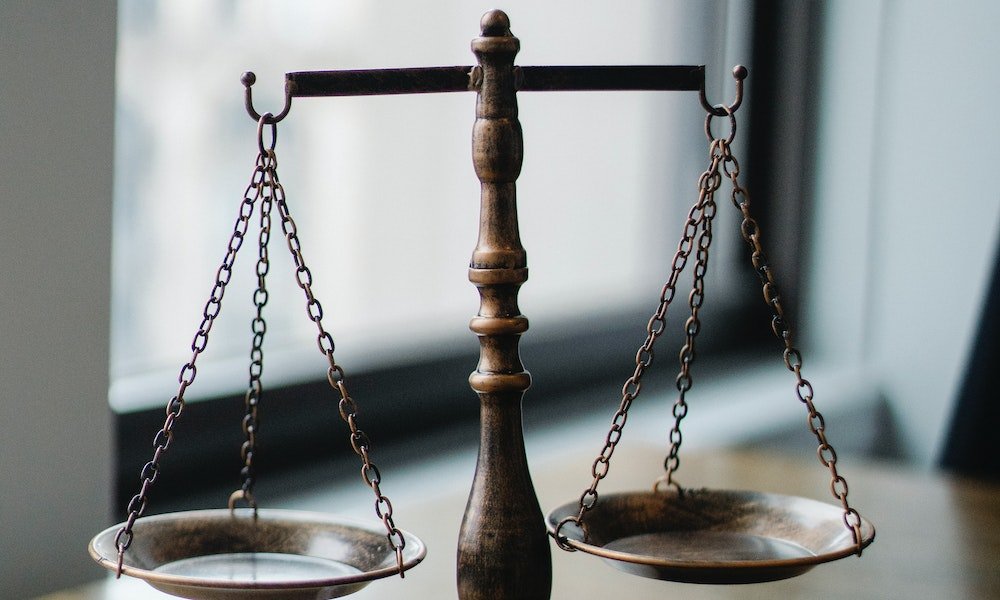6 Important Intellectual property law copyright in America

Intellectual property law, In today’s digital age, intellectual property plays a crucial role in safeguarding creative works and promoting innovation. Intellectual property law, particularly copyright law, is vital for protecting various forms of expression, from books and music to software and designs. This article explores the fundamentals of intellectual property law, with a focus on copyright in America. By understanding the key aspects of copyright, individuals and businesses can effectively protect their creative endeavors and navigate the complex landscape of intellectual property.
Read More: 7 best Intellectual property in business in California
Contents
- 1 Understanding Intellectual Property
- 2 Types of Intellectual Property
- 3 Copyright Law in America
- 4 The Purpose and Scope of Copyright
- 5 Copyright Ownership and Duration
- 6 Exclusive Rights of Copyright Owners
- 7 Limitations and Exceptions to Copyright
- 8 Copyright Infringement
- 9 Protecting Copyrighted Works
- 10 Fair Use Doctrine
- 11 International Copyright Protection
- 12 Trademarks and Patents
- 13 Trademark Law in America
- 14 Patent Law in America
- 15 Trade Secrets
- 16 Conclusion
- 17 FAQs (Frequently Asked Questions)
Understanding Intellectual Property
Intellectual property refers to the legal rights granted to individuals or entities for their creations or inventions. These rights enable the creators to control and benefit from their work, ensuring that others cannot use or exploit it without permission. Intellectual property can take various forms, including literary, artistic, musical, and industrial works. It encompasses copyrights, trademarks, patents, and trade secrets, each serving a unique purpose.

Types of Intellectual Property
Intellectual property law, Intellectual property law recognizes different categories of protection. Copyright primarily safeguards creative expressions such as literary works, music, films, and software. Trademarks protect distinctive signs like brand names, logos, and slogans that distinguish goods or services. Patents provide exclusive rights for inventions, processes, or designs. Trade secrets encompass confidential business information, such as formulas, methods, or customer lists, which give a competitive advantage.
Copyright Law in America
Intellectual property law, Copyright law in America is governed by the United States Copyright Act and provides legal protection for original works of authorship. It grants creators exclusive rights over their creations while balancing the interests of the public. Copyright protection is automatic and applies to both published and unpublished works. Understanding the purpose, scope, and limitations of copyright is essential for creators, consumers, and businesses.
The Purpose and Scope of Copyright
Intellectual property law, The primary purpose of copyright is to encourage creativity by granting creators the right to control and profit from their work. Copyright protection promotes the development of new works and ensures a fair return on investment for creators. It also contributes to the cultural and economic growth of a nation by fostering a vibrant creative industry. Copyright protects original expressions but not ideas, facts, or concepts.
Copyright Ownership and Duration
Intellectual property law, Copyright ownership initially rests with the creator or author of the work. However, there are exceptions for works made for hire, where the employer or commissioning party becomes the owner. Copyright protection typically lasts for the author’s lifetime plus an additional 70 years. For anonymous or pseudonymous works, the term is 95 years from the date of publication or 120 years from the creation date, whichever is shorter.
Exclusive Rights of Copyright Owners
Intellectual property law, Copyright grants several exclusive rights to the owners, including the rights to reproduce, distribute, publicly display, publicly perform, and create derivative works based on the original. These rights enable creators to control how their work is used, reproduced, or distributed. Copyright owners can license or transfer these rights to others, granting permission for specific uses in exchange for compensation.

Limitations and Exceptions to Copyright
Intellectual property law, While copyright provides exclusive rights to creators, it is also subject to limitations and exceptions. These provisions ensure that copyright does not hinder the progress of knowledge and creativity. Fair use is a significant exception that allows limited use of copyrighted works for purposes such as criticism, commentary, teaching, research, or news reporting. Other exceptions include parody, incidental use, and library archiving.
Copyright Infringement
Intellectual property law, Copyright infringement occurs when someone violates the exclusive rights of a copyright owner without authorization. It involves unauthorized reproduction, distribution, public performance, or display of a copyrighted work. Infringement can result in legal consequences, such as injunctions, damages, and the seizure or destruction of infringing materials. It is crucial for individuals and businesses to respect copyright and seek appropriate licenses or permissions when using copyrighted works.
Protecting Copyrighted Works
Intellectual property law, To protect their copyrighted works, creators should consider marking their works with the copyright symbol (©), the name of the copyright owner, and the year of first publication. While copyright protection is automatic, registering the work with the United States Copyright Office offers additional benefits. Registration creates a public record of the copyright claim and provides the option to seek statutory damages and attorney’s fees in case of infringement.
Fair Use Doctrine
Intellectual property law, Fair use is an essential aspect of copyright law that allows limited use of copyrighted material without permission from the copyright owner. It provides breathing room for commentary, criticism, parody, education, and other transformative uses of copyrighted works. Determining fair use involves a case-by-case analysis, considering factors such as the purpose and character of the use, the nature of the copyrighted work, the amount used, and the effect on the market.
International Copyright Protection
Intellectual property law, Copyright protection extends beyond national borders. The Berne Convention for the Protection of Literary and Artistic Works and other international treaties ensure that copyright owners enjoy protection in foreign countries. The United States has reciprocal agreements with many nations, allowing creators to enforce their rights internationally. However, it’s essential to understand the specific laws and regulations of each country to secure adequate protection.
Trademarks and Patents
Intellectual property law, While copyright protects creative works, trademarks and patents safeguard different forms of intellectual property. Trademarks protect brands, logos, and slogans that distinguish goods or services in the marketplace. Patents, on the other hand, provide exclusive rights for inventions, processes, or designs, promoting innovation by rewarding inventors with a limited monopoly. Trademark and patent laws have their unique requirements and procedures for registration and enforcement.
Trademark Law in America
Intellectual property law, Trademark law in America is governed by the Lanham Act and protects distinctive signs that identify and distinguish goods or services in commerce. Trademarks can be words, names, symbols, or even sounds and scents. Registration with the United States Patent and Trademark Office (USPTO) provides additional benefits, including nationwide notice and the presumption of ownership. Trademark infringement can result in legal remedies, including damages and injunctions.
Patent Law in America
Patent law in America grants inventors exclusive rights to their inventions for a limited period. The United States Patent and Trademark Office (USPTO) oversees the patent process, which involves filing a detailed application and meeting the requirements of novelty, usefulness, and non-obviousness. Patents can be granted for machines, processes, compositions of matter, or improvements thereof. Patent protection allows inventors to monetize their inventions and prevents others from using, making, or selling the patented technology without permission.
Trade Secrets
Trade secrets encompass confidential and valuable business information that provides a competitive advantage. Unlike other forms of intellectual property, trade secrets do not require registration or disclosure. Protecting trade secrets involves maintaining secrecy through non-disclosure agreements, restricted access, and other security measures. Misappropriation of trade secrets can result in legal action, including injunctions and monetary damages.

Conclusion
Intellectual property law, particularly copyright, plays a vital role in protecting creative works and fostering innovation. Copyright provides creators with exclusive rights over their creations, enabling them to control and benefit from their work. Understanding the key concepts of copyright, including ownership, duration, fair use, and infringement, is essential for creators, consumers, and businesses. By respecting and protecting intellectual property, we can nurture a thriving creative industry that drives economic and cultural growth.
Read More: what are the 4 types of intellectual property in USA
FAQs (Frequently Asked Questions)
Q1: How long does copyright protection last in America?
Copyright protection in America typically lasts for the author’s lifetime plus an additional 70 years. However, for anonymous or pseudonymous works, the term is 95 years from the date of publication or 120 years from the creation date, whichever is shorter.
Q2: What is fair use?
Fair use is a legal doctrine that allows limited use of copyrighted material without permission from the copyright owner. It applies in cases of criticism, commentary, parody, education, research, or news reporting. Determining fair use involves considering factors such as the purpose and character of the use, the nature of the copyrighted work, the amount used, and the effect on the market.
Q3: How can I protect my copyrighted works?
To protect your copyrighted works, consider marking them with the copyright symbol (©), your name, and the year of first publication. While copyright protection is automatic, registering your work with the United States Copyright Office offers additional benefits, including the option to seek statutory damages and attorney’s fees in case of infringement.
Q4: What is the difference between copyright, trademarks, and patents?
Copyright protects creative works, such as books, music, and software. Trademarks safeguard distinctive signs like brand names and logos, distinguishing goods or services. Patents provide exclusive rights for inventions, processes, or designs. Each form of intellectual property serves a unique purpose and has its own requirements and procedures for protection.
Q5: What are trade secrets?
Trade secrets are confidential business information that provides a competitive advantage. Unlike other forms of intellectual property, trade secrets do not require registration or disclosure. Protecting trade secrets involves maintaining secrecy through non-disclosure agreements, restricted access, and other security measures.





